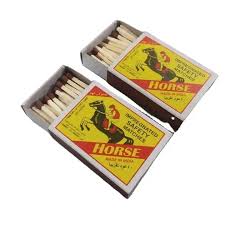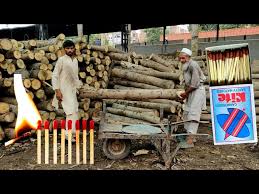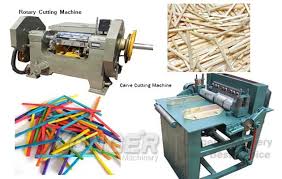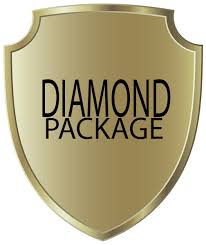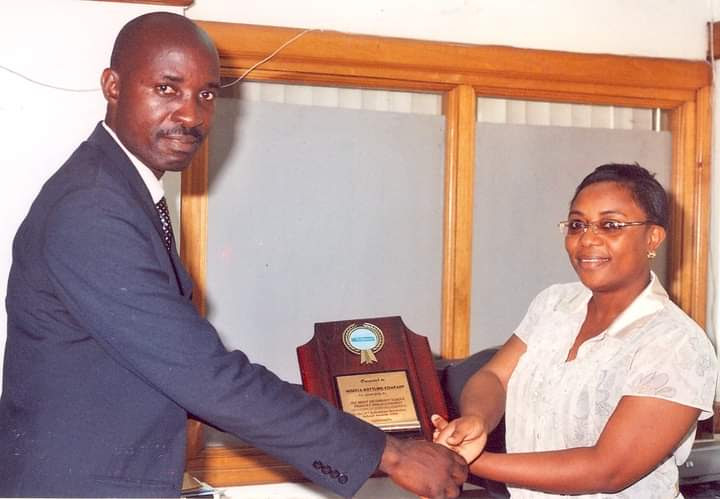![]()
If you’ve landed on this article page, you’re probably searching for a
good business idea—an idea that’s light on the pocket but heavy on
returns, promising both a fulfilling journey and potential profit.
|
How to start a lucrative safety match Production Company
A match is a small stick of wood or strip of cardboard with a
solidified mixture of flammable chemicals deposited on one end.
When that end is struck on a rough surface, the friction
generates enough heat to ignite the chemicals and produce a
small flame. Some matches, called strike-anywhere matches, may
be ignited by striking them on any rough surface. Other matches,
called safety matches, will ignite only when they are struck on
a special rough surface containing certain chemicals.
Raw Materials
Woods used to make matchsticks must be porous enough to absorb
various chemicals, and rigid enough to withstand the bending
forces encountered when the match is struck. They should also be
straight-grained and easy to work, so that they may be readily
cut into sticks. White pine and aspen are two common woods used
for this purpose.
Once the matchsticks are formed, they are soaked in ammonium
phosphate, which is a fire retardant. This prevents the stick
from smoldering after the match has gone out. During
manufacture, the striking ends of the matchsticks are dipped in
hot paraffin wax. This provides a small amount of fuel to
transfer the flame from the burning chemicals on the tip to the
matchstick itself. Once the paraffin burns off, the ammonium
phosphate in the matchstick prevents any further combustion.
The heads of strike-anywhere matches are composed of two parts,
the tip and the base. The tip contains a mixture of phosphorus
sesquisulfide and potassium chlorate. Phosphorus sesquisulfide
is a highly reactive, non-toxic chemical used in place of white
phosphorus. It is easily ignited by the heat of friction against
a rough surface. The potassium chlorate supplies the oxygen
needed for combustion. The tip also contains powdered glass and
other inert filler material to increase the friction and control
the burning rate. Animal glue is used to bind the chemicals
together, and a small amount of zinc oxide may be added to the
tip to give it a whitish color. The base contains many of the
same materials as the tip, but has a smaller amount of
phosphorus sesquisulfide. It also contains sulfur, rosin, and a
small amount of paraffin wax to sustain combustion. A
water-soluble dye may be added to give the base a color such as
red or blue.
There is a huge market for this product and it continues to grow
because there is a need for match-stick. Match-stick is usually
packaged in small and medium boxes and sold in quantities. So if
you are looking for a business to go into or invest in that will
give you good returns in a short period of time, then you should
consider going into this business.
The heads of safety matches are composed of a single part. They
contain antimony trisulfide, potassium chlorate, sulfur,
powdered glass, inert fillers, and animal glue. They may also
include a water-soluble dye. Antimony trisulfide cannot be
ignited by the heat of friction, even in the presence of an
oxidizing agent like potassium chlorate, and it requires another
source of ignition to start the combustion. That source of
ignition comes from the striking surface, which is deposited on
the side of the matchbox or on the back cover of the matchbook.
The striking surface contains red phosphorus, powdered glass,
and an adhesive such as gum arabic or urea formaldehyde. When a
safety match is rubbed against the striking surface, the
friction generates enough heat to convert a trace of the red
phosphorus into white phosphorus. This immediately reacts with
the potassium chlorate in the match head to produce enough heat
to ignite the antimony trisulfide and start the combustion.
The Manufacturing
Process
Matches are manufactured in several stages. In the case of
wooden-stick matches, the matchsticks are first cut, prepared,
and moved to a storage area. When the matchsticks are needed,
they are inserted into holes in a long perforated belt. The belt
carries them through the rest of the process, where they are
dipped into several chemical tanks, dried, and packaged in
boxes. Cardboard-stick matches used in match books are processed
in a similar manner.
Here is a typical sequence of operations for manufacturing
wooden-stick matches:
Cutting the matchsticks
1 Logs of white pine or aspen are clamped in a debarking machine
and slowly rotated while spinning blades cut away the outer bark
of the tree.
2 The stripped logs are then cut into short lengths about 1.6 ft
(0.5 m) long. Each length is placed in a peeler and rotated
while a sharp, flat blade peels a long, thin sheet of wood from
the outer surface of the log. This sheet is about 0.1 in (2.5
mm) thick and is called a veneer. The peeling blade moves inward
toward the core of the rotating log until only a small, round
post is left. This post is discarded and may be used for fuel or
reduced to wood chips for use in making paper or chipboard.
Stripped logs are placed in a peeler, which cuts a sheet about
0.1 in (2.5 mm) thick, called veneer, from the log. The veneer
proceeds to the chopper, which cuts it into small sticks. The
sticks are soaked in a dilute solution of ammonium phosphate and
dried, removing splinters and crystallized solution. The matches
are dumped into a feed hopper, which lines them up. A perforated
conveyor belt holds them upside down while they are dipped in a
series of three tanks. The matches are dried for 50-60 minutes
before they are packaged.
3 The sheets of veneer are stacked and fed into a chopper. The
chopper has many sharp blades that cut down through the stack to
produce as many as 1,000 matchsticks in a single stroke.
Treating the matchsticks
4 The cut matchsticks are dumped into a large vat filled with a
dilute solution of ammonium phosphate.
5 After they have soaked for several minutes, the matchsticks
are removed from the vat and placed in a large, rotating drum,
like a clothes dryer. The tumbling action inside the drum dries
the sticks and acts to polish and clean them of any splinters or
crystallized chemical.
6 The dried sticks are then dumped into a hopper and blown
through a metal duct to the storage area. In some operations the
sticks are blown directly into the matchmaking facility rather
than going to storage.
Forming the match heads
7 The sticks are blown from the storage area to a conveyor belt
that transfers them to be inserted into holes on a long,
continuous, perforated steel belt. The sticks are dumped into
several v-shaped feed hoppers that line them up with the holes
in the perforated belt. Plungers push the matchsticks into the
holes across the width of the slowly moving belt. A typical belt
may have 50-100 holes spaced across its width. Any sticks that
do not seat firmly into the holes fall to a catch area beneath
the belt and are transferred back to the feed hoppers.
8 The perforated belt holds the matchsticks upside down and
immerses the lower portion of the sticks in a bath of hot
paraffin wax. After they emerge from the wax, the sticks are
allowed to dry.
9 Further down the line, the matchsticks are positioned over a
tray filled with a liquid solution of the match head chemicals.
The tray is then momentarily raised to immerse the ends of the
sticks in the solution. Several thousand sticks are coated at
the same time. This cycle repeats itself when the next batch of
sticks is in position. If the matches are the strike-anywhere
kind, the sticks move on to another tray filled with a solution
of the tip chemicals, and the match ends are immersed in that
tray, only this time not quite as deeply. This gives
strike-anywhere matches their characteristic two-toned
appearance.
10 After the match heads are coated, the matches must be dried
very slowly or they will not light properly. The belt loops up
and down several times as the matches dry for 50-60 minutes.
Packaging the matches
11 The cardboard inner and outer portions of the match boxes are
cut, printed, folded, and glued together in a separate area. If
the box is to contain safety matches, the chemicals for the
striking strip are mixed with an adhesive and are automatically
applied to the outer portion of the box.
12 When the matches are dry, the belt moves them to the
packaging area, where a multi-toothed wheel pushes the finished
matches out of the holes in the belt. The matches fall into
hoppers, which measure the proper amount of matches for each
box. The matches are dumped from the hoppers into the inner
portions of the cardboard match boxes, which are moving along a
conveyor belt located below the hoppers. Ten or more boxes may
be filled at the same time.
13 The outer portions of the match boxes move along another
conveyor belt running parallel to the first belt. Both conveyors
stop momentarily, and the filled inner portions are pushed into
the outer portions. This cycle of filling the inner portions and
pushing them into the outer portions is repeated at a rate of
about once per second.
14 The filled match boxes are moved by conveyor belt to a
machine, which groups them and places them in a corrugated
cardboard box for shipping.
Quality Control
The chemicals for each portion of the match head are weighed and
measured exactly to avoid any variation in the match composition
that might affect performance. Operators constantly monitor the
operation and visually inspect the product at all stages of
manufacture. In addition to visual inspection and other normal
quality control procedures, match production requires strict
attention to safety. Considering that there may be more than one
million matches attached to the perforated belt at any time
means that the working environment must be kept free of all
sources of accidental ignition.
Production planning
The Plant will have an installed capacity hourly Capacity of
50,000 Boxes of 40 pieces Safety match per box working for 8
hours shift and arranged in 10 boxes per pack and 1000 boxes per
carton.
Production is planned for 8 Hours daily on a shift work for 300
days in a year. However Capacity utilization has been projected
at 40,000 boxes daily or 80% of installed capacity in the first
year and increasing production in the following years until
maximum utilization is achieved.
The Plant will distribute its match at 8,500 Naira per Carton of
1,000 boxes while recommended single box retail will be 50
Naira.
The Complete
Production Plant is N35 Million, excluding Generator and working
capital.
Net margin for the investment before tax is projected at N12.1
million, N14million, N16million Naira the first three years
respectively.
Raw materials: Wood is one of the major material used in
producing matchstick. The word”matchstick” already tells you
that wood is the main component, so now all you need is to know
the type of wood that is used to produce the woodensplint and
find a supplier of that particular wood. Also, you need to find
where you can get the other raw materials like, the chemicals
use for processing and flaming the matchstick (phosphorus and
paraffin wax) and some colourants to make your matchstick
different from others.
You will also need to find suppliers for these raw materials and
ensure that they are able to maintain a steady supply of the
materials they supply.
Equipment: The major equipment needed for production is;*Head
composition machine,* Splint machine,* Air compressor,*
Polishing machine,* Log conveyor
In addition, you will need to hire additional individuals to
assist you with the business. Each of your machines will be
manned by one or two individuals, which means you will need to
hire between 10 to 20 staff. However, you must ensure that your
employees are competent and able to play their roles
excellently.
Matches are sold in quantity. There’s the wooden type, which are
packaged in boxes. And there are paper matches, which are
clustered in rows stapled into matchbooks. Because matches are
used in almost every home and in almost every industrial
establishment, the demand for matches is always high. This means
there is huge profit potential in the matchstick production
business.
Get our Practical Training guide on Safety Match Production. The
detailed and comprehensive training will be provided. It will
cover all the aspects of the project, from analyzing the market,
confirming availability of various necessities such as plant &
machinery, raw materials, manufacturing techniques and
forecasting financial aspects by estimating the cost of raw
material, formulating the income statement, balance sheet and
cash flow.
Remember, this comprehensive guide serves as a general roadmap
to help you understand the various aspects of starting a match
stick production business. It is crucial to conduct thorough
research, seek expert advice, and adapt the information provided
to your specific circumstances before embarking on your
entrepreneurial journey.
|
